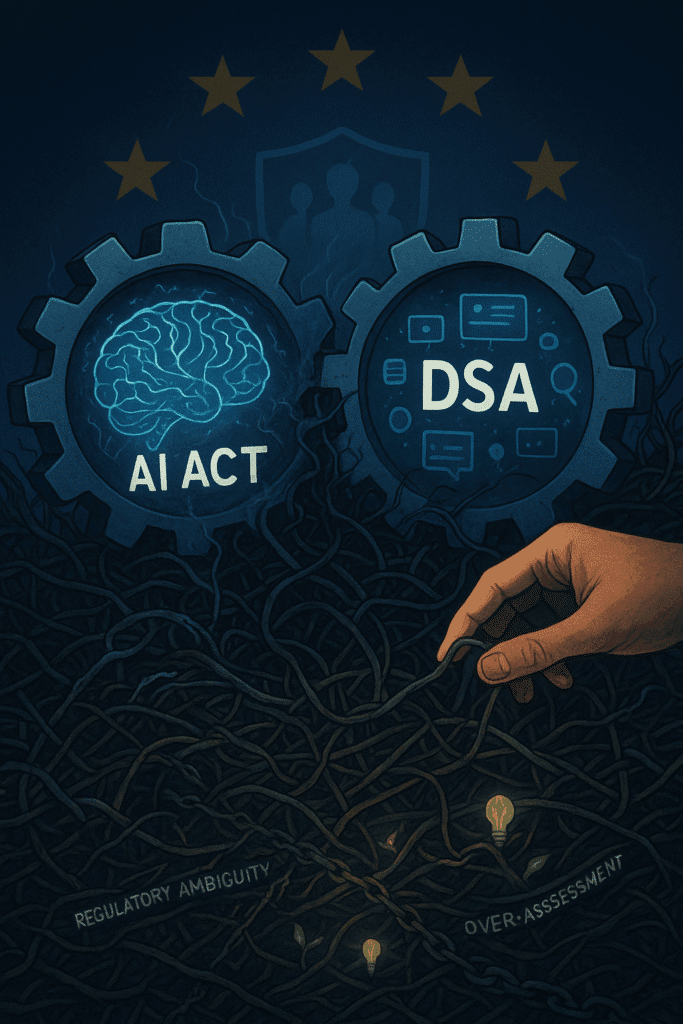Introduction to AI Regulation in the EU
The European Union (EU) is working to balance the need for innovation in Artificial Intelligence (AI) with the need to protect fundamental rights and public safety. A new paper published by Dr. Theodoros Karathanasis, a research fellow, explores the complex relationship between the AI Act and the Digital Services Act (DSA) in regulating AI innovation in the EU.
Abstract
The paper investigates the challenges the EU faces in balancing AI innovation with robust fundamental rights protection under the AI Act and the DSA. It highlights the different approaches the two acts take to defining systemic risk and the implications this has for AI innovation. The paper argues that the current regulatory framework can lead to over-assessment and unnecessary burdens on Small and Medium-sized Enterprises (SMEs) and advocates for strategic simplification to balance safety concerns with the need to maintain EU leadership in AI innovation.
The Regulatory Interplay Between the AI Act and the DSA
The AI Act and the DSA are two key pieces of legislation that regulate AI innovation in the EU. The AI Act provides a precise definition of systemic risk tied to General-Purpose AI (GPAI) models, while the DSA focuses on ensuring a safe and trustworthy online environment and establishes a risk-management framework for Very Large Online Platforms (VLOPs) and Very Large Online Search Engines (VLOSEs). The paper highlights the distinction between the two acts, with the AI Act focusing on the inherent capabilities of the foundational AI model and the DSA focusing on the operational environment and user interactions within large online platforms.
Challenges and Gaps in the Current Regulatory Framework
The paper identifies several challenges and gaps in the current regulatory framework. One key challenge is the regulatory ambiguity that can lead to over-assessment and unnecessary burdens on SMEs. The paper also highlights the gap in addressing uncovered systemic risks inherent to GPAI models, which are not fully addressed by the DSA. The AI Act’s "unless clause" is seen as a key provision that can help address these risks, but the paper argues that more needs to be done to simplify the interplay between the two acts.
Recommendations for Simplification
The paper offers several recommendations to simplify the interplay between the AI Act and the DSA and optimize regulatory effectiveness. These include refining systemic risk taxonomy and clarifying proportionality principles, streamlining compliance pathways and standardizing documentation, prioritizing proactive guidance and structured updates, and nurturing effective governance and multi-stakeholder collaboration.
Conclusion
The EU’s regulatory framework for AI innovation is complex and poses significant challenges for SMEs. The paper argues that strategic simplification is needed to balance safety concerns with the need to maintain EU leadership in AI innovation. By refining systemic risk taxonomy, streamlining compliance pathways, and prioritizing proactive guidance, the EU can create a more effective and efficient regulatory framework that supports AI innovation while protecting fundamental rights and public safety.
FAQs
- What is the AI Act and how does it regulate AI innovation in the EU?
The AI Act is a piece of legislation that regulates AI innovation in the EU by providing a precise definition of systemic risk tied to General-Purpose AI (GPAI) models. - What is the Digital Services Act (DSA) and how does it regulate online platforms?
The DSA is a piece of legislation that regulates online platforms by establishing a risk-management framework for Very Large Online Platforms (VLOPs) and Very Large Online Search Engines (VLOSEs). - What are the challenges and gaps in the current regulatory framework for AI innovation in the EU?
The current regulatory framework poses several challenges and gaps, including regulatory ambiguity, over-assessment, and the failure to address uncovered systemic risks inherent to GPAI models. - What recommendations are made to simplify the interplay between the AI Act and the DSA?
The paper recommends refining systemic risk taxonomy, streamlining compliance pathways, prioritizing proactive guidance, and nurturing effective governance and multi-stakeholder collaboration. - Why is it important to simplify the regulatory framework for AI innovation in the EU?
Simplifying the regulatory framework is important to balance safety concerns with the need to maintain EU leadership in AI innovation and to support SMEs in developing and deploying AI technologies.











